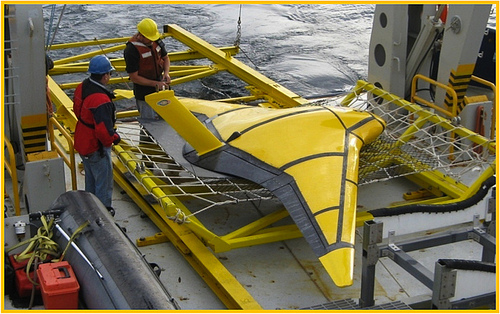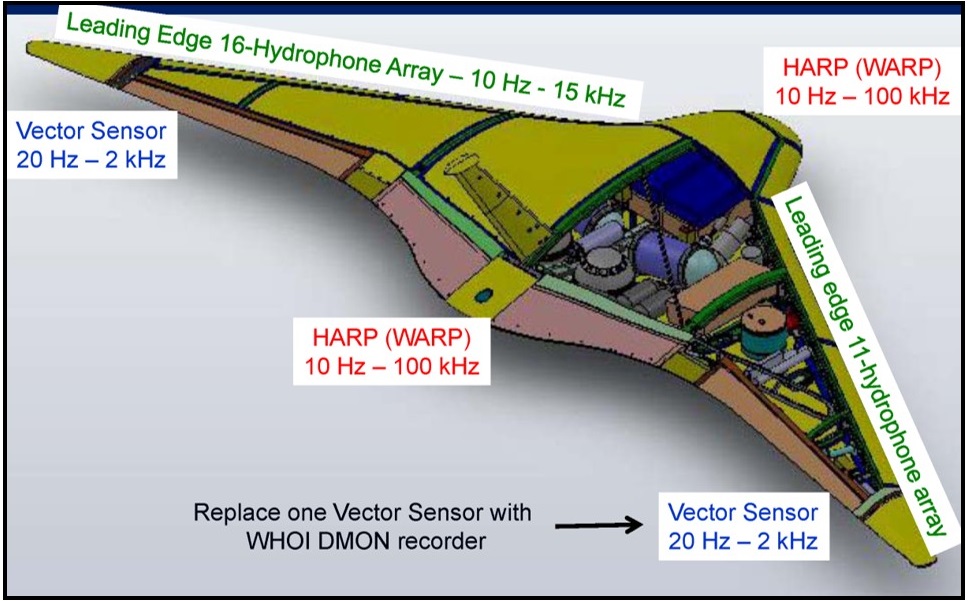ZRay Glider

ZRay during at-sea testing near San Diego, CA. (Photo: Scripps)
ZRay is an autonomous underwater vehicle funded by the Office of Naval Research and developed by a team from Scripps Institute of Oceanography,the Applied Physics Lab at the University of Washington, and the U.S. Navy's Space and Naval Warfare Systems Center Pacific. The 6 meter wide blended wing-body hullform glider was completed in 2010 and is based on the Liberdade class model developed by ONR since 2004. ZRay was preceded by a series of increasingly-capable AUV gliders including Stingray (2004), and XRay (2005).
ZRay collects acoustic data via a 27-element hydrophone array installed in a sonar housing in the glider’s leading edge. Wide-band acoustic sensors are also located in the nose and tail. The long endurance (1 month, 1000 kilometer range) vehicle has oceanographic and potential anti-submarine warfare applications. In 2011, ZRay conducted testing off San Diego in support of the Navy's Passive Acoustic Autonomous Monitoring (PAAM) of Marine Mammals Program. PAAM is designed to track marine mammals over long periods in Navy acoustic testing areas.

See also:
Autonomous Submarine Drones: Cheap, Endless Patrolling
China's gliders: Haiyan & Sea Wing